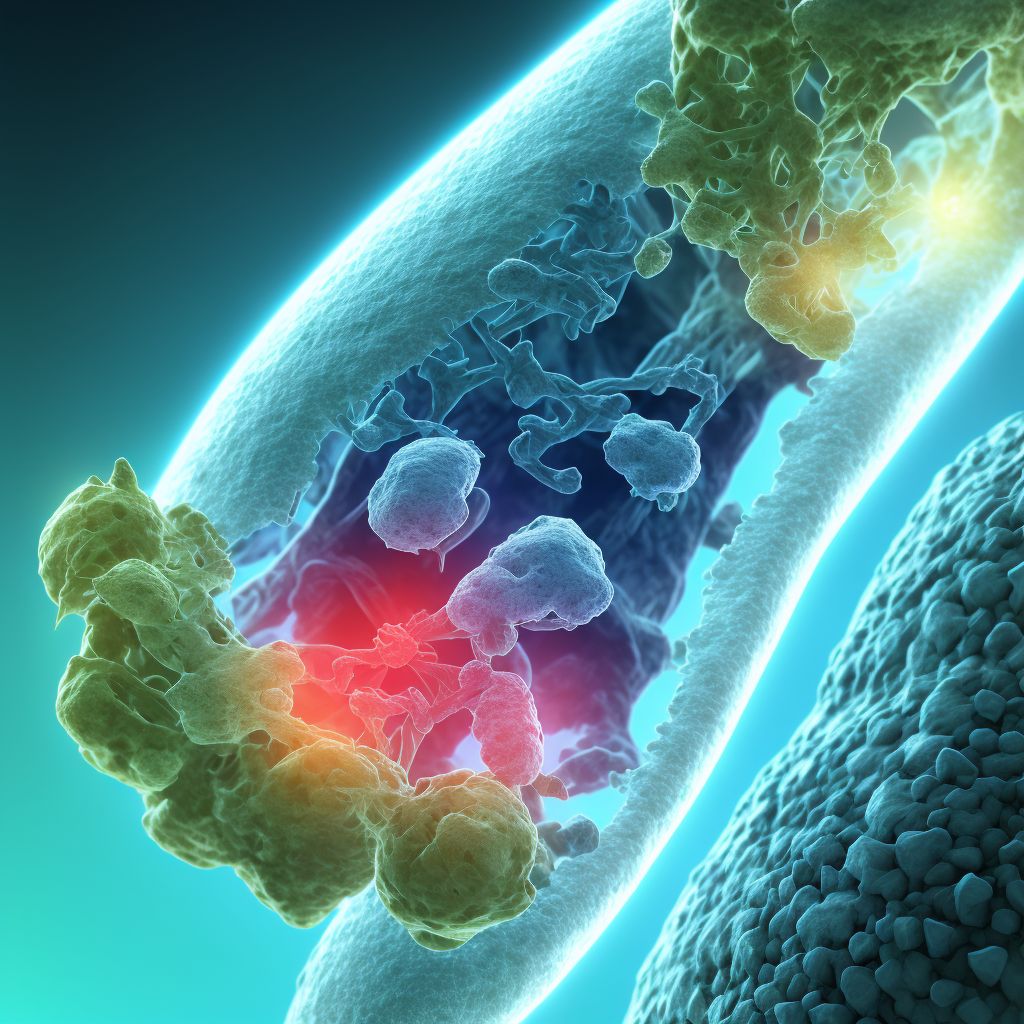
Nondisplaced fracture of medial condyle of left tibia, sequela Save
ICD-10 code: S82.135S
Disease category: S82.135: Nondisplaced fracture of medial condyle of left tibia
Nondisplaced Fracture of Medial Condyle of Left Tibia, Sequela
A nondisplaced fracture of the medial condyle of the left tibia, sequela, refers to a condition where the bone's medial condyle has experienced a fracture that has not shifted out of its normal position. This type of fracture is commonly seen as a result of trauma or excessive force applied to the knee joint.
When a fracture occurs, the bone can break partially or completely. In the case of a nondisplaced fracture, the bone remains aligned, meaning that the broken pieces have not moved out of place. This is a favorable outcome as it reduces the risk of complications and allows for quicker healing.
With a medial condyle fracture, the bony prominence on the inside of the tibia is affected. This area plays a crucial role in stabilizing the knee joint and ensuring proper movement. When a fracture occurs, it can lead to pain, swelling, and limited mobility.
It is important to note that a sequela refers to the after-effects or consequences of a previous condition or injury. In the case of a nondisplaced fracture of the medial condyle of the left tibia, sequela, it implies that there may be residual symptoms or complications following the initial fracture.
- Chronic pain: Some individuals may experience ongoing discomfort in the affected knee, even after the fracture has healed. This can be due to inflammation, nerve damage, or residual instability.
- Joint stiffness: The injured knee may have reduced range of motion, making it difficult to perform certain activities or fully extend the leg.
- Weakness: Muscles surrounding the knee joint can weaken as a result of reduced use during the healing process. This weakness may persist even after the fracture has healed.
It is crucial to consult with a healthcare professional to properly diagnose and address any sequela resulting from a nondisplaced fracture of the medial condyle of the left tibia. They can provide appropriate guidance and recommend exercises or physical therapy to improve strength and mobility.
While treatment options are not discussed within this article, it is important to note that prompt medical attention, immobilization, and rehabilitation play a crucial role in the recovery process for nondisplaced fractures.
In conclusion, a nondisplaced fracture of the medial condyle of the left tibia, sequela, can lead to residual symptoms such as chronic pain, joint stiffness, and weakness. Seeking professional medical advice is essential to address these issues and ensure a proper recovery.
Treatment of Nondisplaced fracture of medial condyle of left tibia, sequela:
Treatment Options for Nondisplaced Fracture of Medial Condyle of Left Tibia, Sequela
When it comes to a nondisplaced fracture of the medial condyle of the left tibia, sequela, there are several treatment options available. These fractures occur when there is a break in the bone, but the pieces remain aligned. While less severe than displaced fractures, prompt medical attention and ...
To see full information about treatment please Sign up or Log in